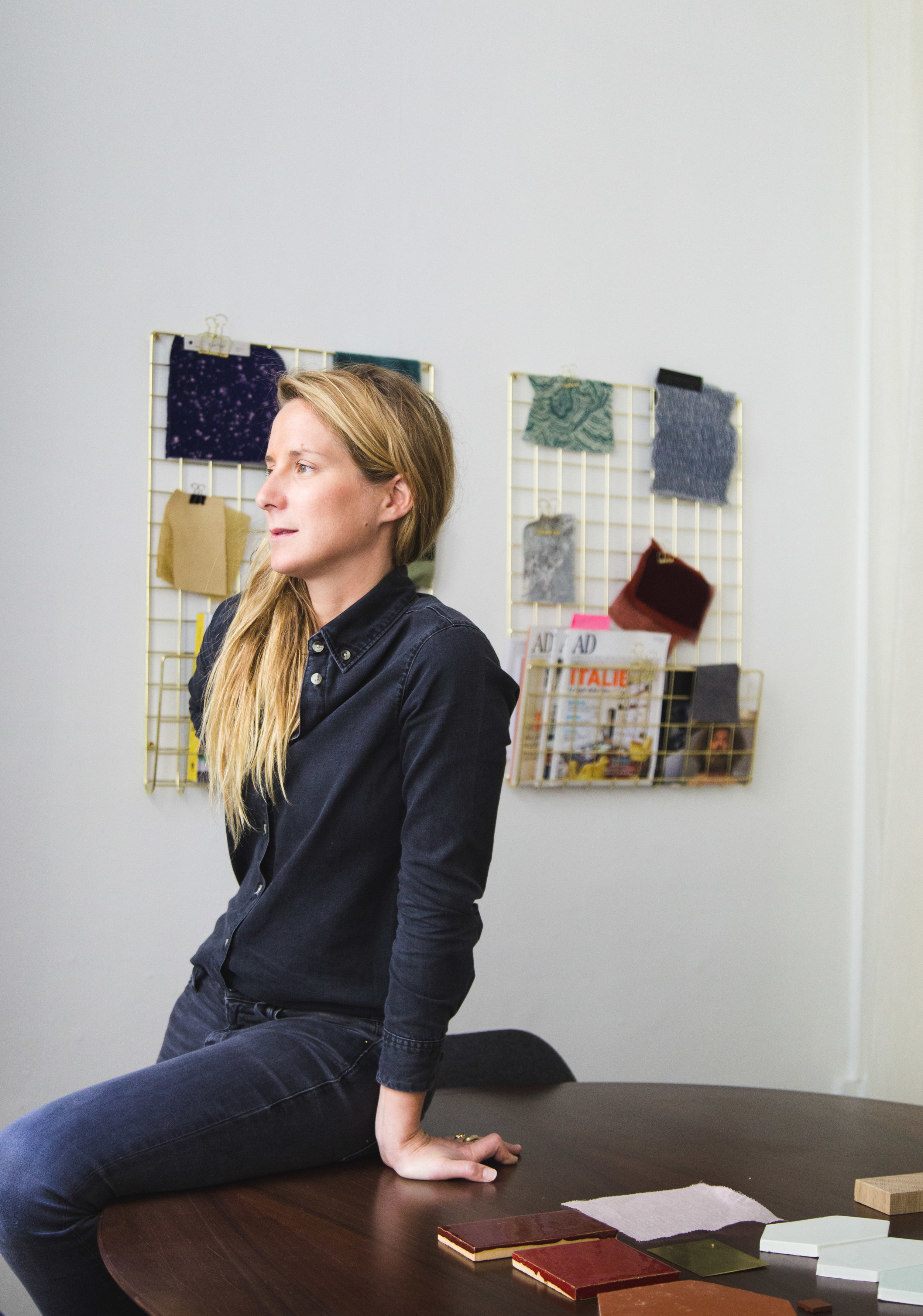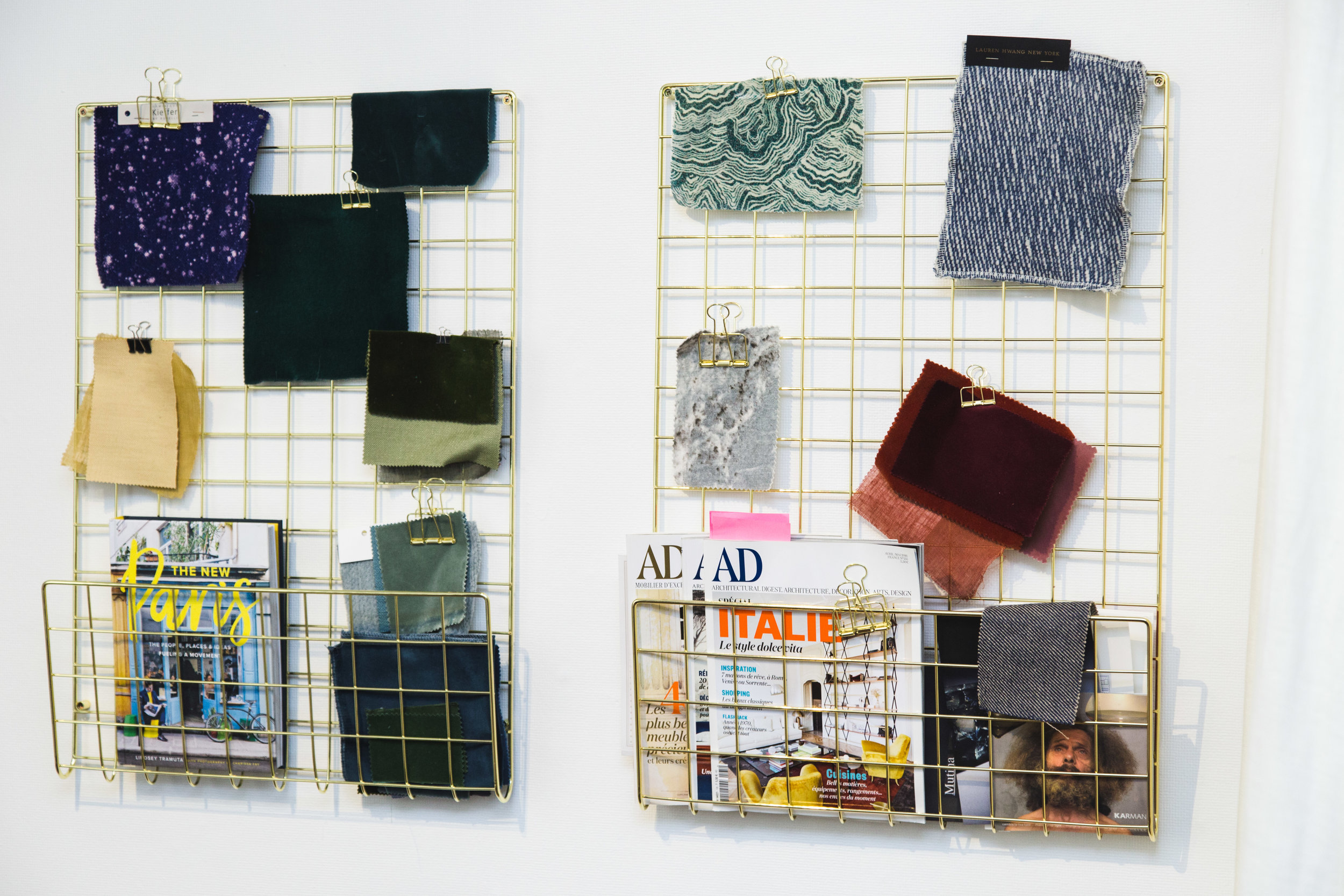Dorothée Meilichzon of CHZON
“Dorothée Meilichzon truly believes that every place has a soul. It is her job to show it to you.”
Growing up in a beautifully decorated home near Paris is what first sprouted the idea of one day becoming a designer. While she can be inspired by a neighborhood or an old piece of design, finding new ideas and spotting trends are what differentiates each of her projects. Meilichzon knows how to balance the complexities of being a designer, especially when it comes to running her own agency. It's not always about getting a sketch down on paper. The process includes her team being hands-on and supervising her projects from idea to its fruition. Meilichzon's interior design can be seen in the passersby recommended wine bar, Compagnie Des Vins Surnaturels by passersby Donna Baxter and Angie Venezia.
FIRST, TELL US ALL ABOUT HOW YOU GREW UP AND how your interest in design started.
Dorothée: I grew up in Paris, and then studied Industrial Design in a school called Strate College, which is one of the only Industrial Design schools in France. I’ve also been a student at RISD, Rhode Island School of Design. I started as a product designer. Then in 2009, I decided to launch my own company and do interior design.
I wanted to be an inventor, but then I discovered the work of Raymond Loewy. He’s designed lots of things, especially in the U.S. I love that you can invent new objects, but also work on the shape of it, not only the function. I think when I was 12 or 13, Philippe Starck was very popular in France. He made videos explaining his point of view and how he was doing design, which was quite interesting. That did it. I decided to be a designer. So I studied design, and I was sure about it for quite a long time.
WHAT ARE SOME LESSONS THAT YOU LEARNED FROM STUDYING DESIGN AT SCHOOL?
As an industrial designer, we know how to do concepts. What I really remember from my studies is the idea that if you want to do a new product, who is going to be your client or user? Why does he need a new product? It was the idea of studying why we need to pursue it. What are people going to like about it? It’s very user-focused in industrial design, which I think is very important. Most of the time, interior designers don’t think of the user. They just think, “I’m gonna do this because I like it. I like blue. I’m gonna do this kind of atmosphere." They don’t always care about the person who’s gonna sleep in this room or bed.
All our teachers were focused on the user. What is the user expecting? Always remember that this product or interior is for someone. It’s not just the idea of doing a space. I think that’s the best way to do work. When you enter a space, what’s it gonna feel like when it’s there? For example, there is a low ceiling. How can we improve it so people won’t notice? Let’s say an elevator is very far away, so there’s a long walk. What do we do so that people enjoy this walk? You have to think about the people all the time and who is gonna use it. They are the only people that matter.
WHAT LED YOU TO START YOUR DESIGN COMPANY, CHZON? HOW DID YOU GET YOUR FIRST CLIENT?
I’ve worked for global design in agencies, and it’s a small world in Paris. It started by myself working in my apartment sixteen hours a day. I thought that I would launch this company and I’d work for all the people in the industry that I know. It was just being freelance. Then I got the opportunity to do the interior design of a cocktail bar, Prescription Cocktail Club, in Paris in the 6th District. My mom was really good at decoration. I always grew up in a very well decorated home. So I did it. I loved the opportunity to do interior design and graphic design. There was this important aspect of the function of the place, like working with the bartender and how to help them to make as much cocktails as possible. It was like a reunion. I said to myself, “Wow, this is great. I love to do this. Let’s do this!” It was the same feeling when I wanted to be a designer when I was 12. I said, “Okay, I’m gonna work for the hospitality design district.” Also because I’ve been traveling a lot in my life, visiting many hotels and bars, that I thought it made sense to design places that I was happy to go to and that I was familiar with.
WHAT WERE SOME HIDDEN CHALLENGES BEHIND RUNNING YOUR OWN COMPANY?
We’re only five people at the moment, so it’s not too much of a big deal. You do need to know how to do everything, just like doing global design. You need to know how to supervise a construction site. You need to know how the plumbing works. You need to know how the electricity works. You need to know the space. You need to know how furniture works. That’s the thing with design. It’s a job where you need to have a lot of skills. You’re supposed to do 3-Ds, but also plans and mock-ups. That’s how they are both similar. To be a company owner, you have to be an accountant and lawyer and designer at the same time.
WITH A NEW CLIENT, HOW DO YOU APPROACH A NEW PROJECT?
We always do lots of research on the building, neighborhood, era the building was built, and style that was happening at the moment. We ask questions like, who’s the architect? What’s happening in the neighborhood? Is there an event that we should know about? Anything that we can find. It can be just an architectural detail of a balcony, roof shape, or color. We’re always starting from that, and we always find something. Then there is a period of time, a pattern that we like, or something happening on the street. We need to get to know the chef of the restaurant. We need to know how many rooms that we’re supposed to do and how many seats. After those questions are answered, we start to tell the story.
We’re also trying to make everything ourselves, with the design. I don’t want to do places where people will say, “Oh, she bought this lamp here, she bought this chair here, she bought this table here…” We’re trying to do as much as possible and design everything so it’s very coherent. You don’t just see the chairs, table, and lamp. You see everything together as the decor. That’s the way we start. Sometimes we want to do this because at this particular moment, we like this kind of marble or a certain color. But ninety percent of the time, we’re trying to tell a story starting from the neighborhood or the building.
WHAT IS YOUR FAVORITE PART OF THE PROCESS IN DESIGNING?
I love the research. I love getting new ideas. I love to do the first sketches on how the room or restaurant is going to look like. This is something I really love because everything is possible. Then for the rest of the time, we’re stuck with decisions we’ve taken, so it’s always more difficult. The very beginning is very exciting.
I also love the construction process. It’s just that it’s not always an easy process because it involves a lot of dust and stress and orders given. I do like to work with workers and to see things growing. There are some interior designers who don’t supervise the work. We do supervise 100 percent of it because it’s quite important to me. Sometimes you do something and it works on 3D and it works in the plan, but then in reality it doesn’t work because the space is a little bit different. The way the light of the sun enters, it changes the colors or the atmosphere. For me, it’s important to be there and to see what doesn’t work. We have to change when it’s possible. If you don’t do that, then it’s too late.
WHAT ADVICE DO YOU HAVE FOR ASPIRING DESIGNERS OR PEOPLE WHO WANT TO PURSUE A CREATIVE CAREER?
It’s a lot of work. In every career, I guess, it’s the same, but designing is difficult because we need to know a lot of things. For example, you don’t learn how to work in a construction site at school. It’s something that you have to be there for. You have to understand. You have to look at what they do. You have to understand every part of the project because if you don’t understand how construction works, you can’t decide things. You’ll be stuck. In fact, you know everything is possible so you have to understand how things work. That’s a lot to learn.
You have to love what you do, and put a lot of yourself in the project. I really do believe that places have soul. For me, the way to do it is to involve everyone. There are a lot of personalities in a project, such as the architect, workers, client, kitchen chef, and staff. If everyone works together and puts a little bit of herself in the project, then, I think, that’s the only way to make great projects. We really have to be involved, and not just say, “Okay, I’m gonna do this part and I don’t care about the rest.” I think we should be involved in all of the process in order to give as much as possible.
WHAT ARE SOME EXAMPLES OF INTERIORS OR DESIGNS THAT YOU LOVE?
My favorite interiors are the rooms of the Gramercy Hotel in New York, the tearoom of the Haymarket Hotel in London, and the cocktail bar of the Connaught in London. We always buy stuff from other designers like Cristina Celestino, Allied Makers, Moda Piera. I am very happy to involve other people I admire.
WHAT IS YOUR DREAM PROJECT THAT YOU WOULD LIKE TO DO ONE DAY?
Every project is a dream project. There are many things we haven’t done. Projects, like hotels or low-budgets are quite nice because it’s always a good way to invent new things. In a way, you’re going to play with some patterns or find new ideas. When we have big budgets, it’s difficult to make decisions because everything is possible. We can go for very expensive things. With small budgets, it’s all about the making because we have rough tiles or paint, so it’s all about the cheap materials. It’s all about making things that I really like.
One day, I would love to do a very luxurious hotel. Not to use fancy or expensive materials but just to do everything by hand and get everything hand-painted. We work a lot with artists, so to design our own fresco is a dream. We do that on a lot of our projects but it’s not all of it. It’s always 10 or 20 percent that is handmade. For the rest, we have to go for tiles or more random things. I would love to do a project where everything is bespoke. Every doorway, every little thing. The way to make everything unique is great. That’s something I would love.
YOU CAN CHECK OUT more of DOROTHÉE'S DESIGNS ON HER COMPANY'S WEBSITE, CHZON.
Words by Jessica Joyce Jacolbe & Photography by Victoria Paterno









